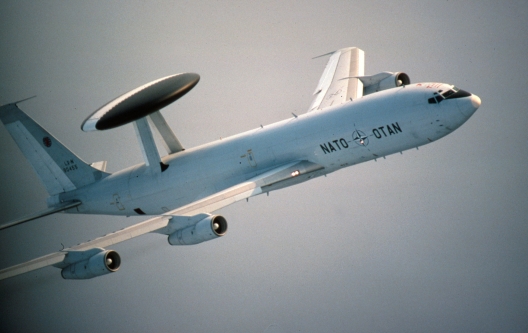 NATO might be calling on its members to raise their defense spending, but if the alliance’s airborne early warning program is anything to go by, that message may be falling on deaf ears.
NATO might be calling on its members to raise their defense spending, but if the alliance’s airborne early warning program is anything to go by, that message may be falling on deaf ears.
For the first time since its formation in the early 1980s, NATO’s Airborne Early Warning and Control Force (AEW&C), also known as the E-3A Component, is facing major cutbacks and a fleet downsizing—at a time when mission tempos are high because of Russian aggression in Ukraine.
The force, based at Geilenkirchen air base in Germany, operates 17 Boeing E-3A Sentry aircraft that provide air surveillance and support NATO air exercises. It was called up to secure U.S. skies in the aftermath of the Sept. 11 terrorist attacks, recently ended a 3.5-year operation in Afghanistan and expects to fly 4,300 hr. during 2015 to support NATO members bordering Ukraine.
Sixteen member states fund the operations with a total of €250 million ($312 million) a year.
Today, however, the force is facing new financial pressures. The most critical of these emerged three years ago, when the Canadian government decided to withdraw its support from the program, seeking to save money in the economic downturn.
Until the country’s flag was lowered at Geilenkirchen in July, Canada had been the third-largest contributor to the program, providing four complete flight crews. The last Canadian personnel left Geilenkirchen at the end of August.
By quitting both the AWACS and also the new Alliance Ground Surveillance (AGS) operation, Canada aimed to save CAD$90 million ($79 million) annually. But without Canada’s money, the force may have to remove one of the 17 E-3 Sentrys from operation because it cannot afford its depot-level maintenance. The aircraft likely will be stored and harvested for parts to support the rest of the fleet.
Image: AWACS: NATO's 'Eye In The Sky,' March 18, 2011 (photo: NATO)

